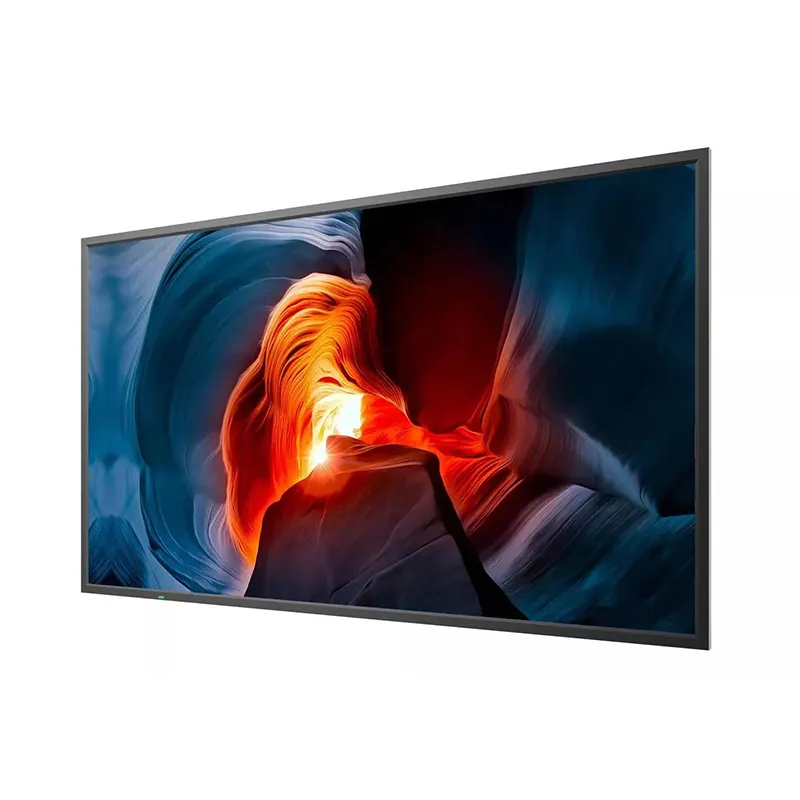Real-World Applications: How Digital Signage Drives Purchases in Different Settings
2024-11-07
Digital signage has revolutionized the retail landscape, providing dynamic and engaging ways for brands to connect with consumers. Whether it’s in a retail store, restaurant, or shopping mall, digital signage influences purchasing decisions by creating immersive experiences and guiding customers toward making a choice. In this blog, we’ll dive into some real-world applications of digital signage across various industries and examine how it drives customer engagement and boosts sales.
1. Digital Signage in Retail: Enhancing Product Appeal
Retail stores use digital signage to create visually appealing displays that showcase products in new and exciting ways. From highlighting product features to displaying limited-time offers, digital signage in retail environments can make products stand out and encourage impulse purchases.
- Example: A clothing store with digital displays in the windows shows models wearing the latest collections, creating excitement around new arrivals. By pairing the display with a limited-time discount, the store can entice passersby to step in and make a purchase. Additionally, digital signage can display real-time social media posts of customers wearing their products, further encouraging potential buyers to join the trend.
2. Restaurants and Quick-Service Chains: Digital Menus and Promotions
In the food and beverage industry, digital signage plays a significant role in guiding customer choices. Digital menu boards in quick-service restaurants (QSRs) and cafes can display images of food items, making them more tempting and helping customers make quicker decisions. These menus can also be programmed to display different options based on the time of day, such as breakfast items in the morning and dinner options in the evening.
- Example: A fast-food restaurant uses digital signage to showcase new menu items with high-definition visuals of food dishes, complete with descriptions and calorie counts. By featuring “Chef’s Specials” or time-limited offers on digital displays, restaurants can create urgency and motivate customers to try new items or upgrade their orders.
3. Shopping Malls: Guiding Customers to Sales and Promotions
Digital signage is highly effective in larger venues like shopping malls, where it helps to direct customer flow and promote various stores. Mall-based digital signage can highlight specific promotions or events happening in certain stores, encouraging mall-goers to check out these deals.
- Example: A shopping mall places large digital screens near entryways and escalators, displaying current promotions and highlighting stores that have major sales or limited-time events. This approach helps attract foot traffic to specific stores and encourages customers to explore different sections of the mall, leading to more purchases.
4. Healthcare and Pharmacies: Promoting Wellness Products
In pharmacies and healthcare facilities, digital signage can be a valuable tool for promoting wellness products, seasonal items, or healthcare tips. These displays can inform customers about over-the-counter remedies, health supplements, or services like flu shots, which are especially relevant during certain seasons.
- Example: A pharmacy uses digital signage to showcase “Featured Products” like vitamins and seasonal allergy medications. By displaying information about these products and their benefits, the pharmacy helps educate customers and drives them to purchase items they may not have initially considered.
5. Grocery Stores: Encouraging Product Trials and Impulse Buys
Digital signage in grocery stores can enhance the shopping experience by encouraging product trials, promoting seasonal items, or offering recipe ideas. Strategically placed screens near the aisles can introduce customers to new products or showcase discounts on popular items, leading to impulse purchases.
- Example: A grocery store uses digital displays in the produce section to show recipe videos that use ingredients available nearby. Seeing these recipes in action can inspire shoppers to purchase items they hadn’t planned to buy. Similarly, digital signage in the checkout line can promote impulse buys, like snacks or beverages, by showcasing attractive visuals and last-minute offers.
6. Event Venues and Stadiums: Boosting Sales with Real-Time Updates
In event venues and stadiums, digital signage provides real-time updates and promotes concessions or merchandise. By displaying food and drink specials or limited-edition merchandise, venues can encourage fans to make additional purchases while they enjoy the event.
- Example: A sports stadium uses digital signage to highlight “Game Day Specials” at concession stands, such as discounted hot dogs or souvenir cups. These promotions entice fans to make extra purchases during the game, boosting revenue while enhancing the event experience.
The Power of Targeted Content in Digital Signage
The effectiveness of digital signage largely depends on the content it displays. Content that is visually engaging, informative, and tailored to the audience’s needs is more likely to drive purchases. Each industry and location requires a unique approach, but the goal remains the same: to create memorable experiences that positively influence purchasing decisions.
Digital signage is a versatile tool that can enhance the customer experience and directly impact purchasing decisions across various settings. From boosting product visibility in retail stores to promoting seasonal health items in pharmacies, digital signage helps brands connect with consumers in meaningful ways. By understanding how to leverage digital displays effectively, businesses can drive engagement, increase sales, and create more enjoyable shopping experiences.



